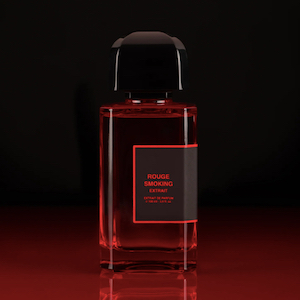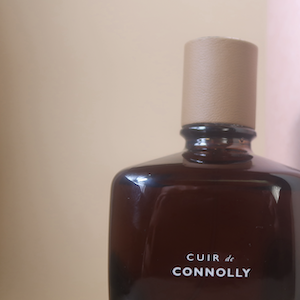Flowers and Filth
By Jo Phillips
Covent Garden was a place of leisure and pleasure for several hundred years alongside its fruit vegetable and flower markets and two theatres, the Covent Garden and Drury Lane both with royal approval. It was where the upper classes would go to see opera and theatre. Yet at the same time between the streets where the theatres lay, another life thrived. These back streets were just as well known for extreme poverty, a workhouse, slum housing, petty theft like pickpocketing, and fights caused by alcoholism due to the numerous pubs alongside prostitution. The fresh scent of flowers blooming, mingled with dirt and degradation. Find out more about both Regal Honours and historic sites with both that own their unique scent, here in Flowers and Filth Here
Covent Garden is one of the most renowned areas for Londoners and tourists alike, and is full of swish shops delicious eateries and a beautiful piazza as well as a long history. The area of St Giles in the area around Seven Dials and behind the market was a slum, notorious for crime and poverty throughout the eighteenth and nineteenth centuries. Only in the mid-20th century did it fully clean up its act.
At the same time in the Victorian age, many people experienced drug use from new chemical syntheses and psychotropic plant discoveries, laudanum, opium dens and even painkillers laced with opium assisted merriment and pleasure-seeking in the 18th century;n and would have been freely available in the area.
It is thought that the favourite intoxicant of Covent Garden courtesans was ratafia, a sweet liqueur flavoured with peach or cherry kernels. Using a good slug after work with a cup of tea, little did they know of the cyanogenic glycosides that lurked in the kernels which if too much was ingested would literally drive them mad. The poorer inhabitants would have had to make do with things like cannabis, coca or Jesuits’ bark.
In 1889, social reformer Charles Booth’s poverty map noted the stark variation from the designation of Nottingham Court which was considered to be a base of prostitution and the well-to-do fringes of Upper St Martin’s Lane and Shaftesbury Avenue. Wealth and poverty sat side by side.

Victorian Charles Booth was a British shipowner, social researcher, and reformer, best known for his innovative philanthropic studies on working-class life in London towards the end of the 19th century. He produced maps of London which were colour coded by wealth and social status.
His landmark survey on the life and labour of London’s poorest inhabitants included poverty maps to illustrate the conditions of the lives of these people. Booth’s maps were based on observations of differences in lifestyle and focused on qualitative factors: food, clothing, shelter, and relative deprivation. Booth and his team of researchers visited every street in London to assess each household’s class. The household’s class was determined by the letters A–H, with A–D constituting want, and E-H representing comfort.

His work chronicled the changing conditions on the streets of London as reformers and philanthropists highlighted the poverty on the doorsteps of wealthy Londoners.
Covent Garden at this point was beginning its journey towards gentrification or certainly, the beginning of the clearing of the slums and as seen in the map above the black area was diminishing as the red areas became more plentiful.
Over 250 years before, in the mid-1650s The Duke of Bedford allowed his land to be used as a temporary market, and in 1670 the Duke was granted a license by Charles II to hold a market every day except Sundays and Christmas. From then on as the area grew, crisscrossing every social boundary
By the time the Duke sold the land, the grounds were split into five main areas, Russell Street, the Row, Flower Market, Charter Market, and Flower Hall.

At the flower market’s height, it would have been where toilette water makers and cologne creators would have come to collect flowers for their perfumes, considered a must by the most fashionable in London society.
The amassed flowers must have given the most wonderful silage to those passing by, as nothing quite beats the scent of freshly picked steams. But at this point, as the area was dirty and crime-ridden one wonders what mingled in the air alongside delicious blooms.
Thameen perfumes of London have just now answered that question. earlier this year and with new creative director Christopher Chong the house bought to the table a stunning scent Fanfare that was a celebration of Lemon and not just of the city of London, but of Covent Garden and its historic flower market, bright, zesty, vibrant, fresh and luxurious Their newest scent, also with inspiration steeped in Covent Garden, is like Fanfare‘s naughty sister.

Where fanfare is a bright, vital vibrant fresh scent Bohemian Infusion brings a deeper and almost dirtier look at this historic market, harking back to the 19th and early 20th century when the area was a playground for the sinful and decadent pleasures of the dandies and literati.
The perfume explores literally the lightness and darkness of a style of Cologne here called a Cologne Elixir making it far longer lasting than traditional light waters, broken down as a citrus woody aromatic.
Opening with utter brightness bought by Zesty citrus facets via Grapefruit and Petitgrain fused here with juicy Blackcurrant and soft spice of warming Cardamom
The heart of the scent is where the perfume begins to turn from bright to dark. Artemisia (also known as Davana) bring exquisite and deep, mellow, fruity, rich, sweetly herbaceous with warm wood accents alongside the very floral Longoza sometimes called White Ginger Lily, with its fresh, white flowery scent. Warm spice from sweet Cinnamon sits with herbaceous and camphoraceous Myrtle to bring a full lusty middle.
It closes and settles in base notes of woody pine cedar-like green ambery woody with a Symrise captive (used only by them) called Ambrostar. Alongside melded in, find woody leathery-resiny -spice from Labdanum with the edition of an unusual Amber called Ambre 83 De Laire, a vanilla-musky even earthy note made in the 1920s and finally deep earthy-spice and rather naughty Patchouli. All these base notes together bring a familiar sense that turns deep and almost dirty, sexy and carnal.
Master Perfumer Maurice Roucel and award-winning senior perfumer Alexandra Carlin worked to express a chiaroscuro-style fragrance of lightness and darkness like the great paintings in this style; think shadow, danger and desire.
But that’s not it, also from the brand comes Insignia from their Sovereign Collection which celebrates many jewels of the Royal family in Britain. This time it’s the Gater Star

A colourfully enamelled depiction of the heraldic shield of St George’s Cross, encircled by the Garter, which is itself encircled by an eight-point silver badge. Queen Elizabeth was appointed the Order of the Gater in 1947 by her father, and so was hugely important to her.
Founded by Edward III of England in 1348. The most senior order of knighthood in the British honours system, with appointments at the Sovereign’s sole discretion.
This new scent is an ode to Britishness according to creative director Christopher Chong who again choose to work with perfumer Alexandra Carlin.
Think of the very aura of Britishness and how it may well meet an heirloom, as this was what the perfume looked to explore. So for her, ingredients had to be classic, grand and elegant.
Opening with a very modern and unusual top of rich woody boozy Whiskey Accord, think of those wooden barrels they store the drink in as it matures, alongside a bitter orange so as not to make it too sweet and a fig accord that brings a slight milky facet with green, and woody elements.

Find the full richness of the queen of flowers Damask Rose with its slight sweetness sitting here alongside rich, green, fruity-mint rosiness of Geranium and soft green herbal tones from Bay leaf.
but the base is a celebration of classics From the elegance of Vetiver, sometimes known as the ‘oil of tranquillity’ with its cut grass drying out scent melded here with woody, earthy, creamy and rich Sandalwood.
Again including another note from De Laire, (Georges de Laire was a perfumery chemist in the mid-18th century) called Cuir Velour de Laire is a warm smokey elegant leather note with facets of animalic and smokey notes.
With both unexpected and classical notes the fragrance melds into a harmonious and elegant scent that of course, as with all Thameens elixirs is unisex.
So Grand Britain with her Regal air and her underbelly gives a great scented aroma for inspiration. From Posh to Plebian the multi-facets of life in the land are thoroughly explored and celebrated in two new rich elegant scents from Thameen London.
To find out more about the brand and perfumes available please visit thameenfragrance.com/





